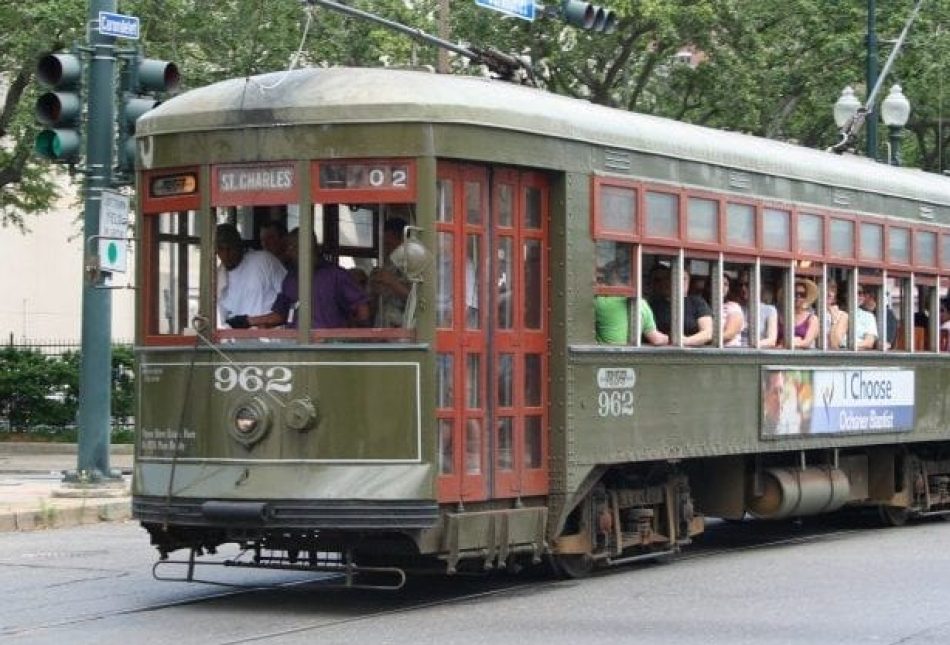A Desire Named Streetcar

Albuquerque’s City Council on Monday will take up Mayor Martin Chávez’s proposal to spend $224 million state and local tax dollars to build what the mayor calls a “modern streetcar.” The plan is to run trains along Central Avenue from the river to Nob Hill and out to the airport. It will only cost an estimated $28 million a mile— in the unlikely case that overruns don’t occur.
Unfortunately, $224 million is just the upfront cost of building the streetcar that Mayor Chávez desires. Once the project is complete, taxpayer will be on the hook for millions of dollars in annual operating costs. According to the Transit Department, the city’s entire bus system operates for a mere $35 million annually. Imagine what kind of bus system we could have with $224 million as opposed to what we’ll have if buses are forced to compete with streetcars for resources.
Fiscal conservatives intuitively understand that $224 million used for a train could also be used in many other ways. Transit supporters especially must be aware that the high cost of this train could ultimately threaten the rest of our transit system. High construction costs and cost overruns often force transit agencies to cut back on bus service and/or raise fares, thus depressing overall transit ridership.
Los Angeles, for example, lost 25 percent of its transit riders when it built a rail transit system between 1985 and 1995. Low income and minority advocates in both Los Angeles and the San Francisco Bay Area have sued transit agencies or transit planners for building expensive rail service to wealthy suburbs while they let bus service to low-income neighborhoods stagnate or decline. If our goal is to provide transit for those who need it, we should invest in a world class bus system, not rail.
Other issues should also give taxpayers and our elected officials pause. One is the fact that even in the corridor served by the streetcar, mobility will not improve much. Differences between bus speed and streetcar speeds will be negligible. Having attended one of the public meetings and heard the pitch from Transit Director Greg Payne and others, it is clear that the point of this project is to “redevelop” the Central Avenue corridor at the expense of taxpayers throughout the rest of the city and state.
Another concern about this streetcar proposal is some of the underlying assumptions being made by its supporters. Backers of the project often point to Portland, Ore., as the shining example of how modern streetcars can work. But Albuquerque has little in common with Portland. With 2,483 people per square mile, according to the Census Bureau, Albuquerque is only 60 percent as dense as Portland which has 4,143 people per square mile. Albuquerque’s metropolitan area also has only 40 percent as many people as Portland (797,000 vs. 2 million).
Portland has set up an entire regional government called Metro that is vested with enormous powers to restrict growth to transit-friendly areas. Still, despite this and a great deal of investment, Portland’s mass transit system actually carried a higher percentage of the region’s daily trips in 1982, prior to building its rail system (2.6 percent), than it does now (2.3 percent).
Supporters of the streetcar plan have also made favorable comparisons between their project and the “Big I” reconstruction. In fact, Payne has repeatedly asserted that having spent $230 million on the “Big I,” it is only right to spend $224 million on a streetcar. This is a poor comparison. The “Big I” is an integral component of our region’s economy and it transports thousands of people and tons of cargo daily. Imagine how bad traffic would be without the “Big I.” There is simply no comparison in terms of importance to the region between the “Big I” and the proposed streetcar.
The mayor’s “modern streetcar” system is simply too expensive and not necessary. Rather than keeping the transit tax in place and making it permanent (with future tax hikes likely), we would all be better off if taxes were reduced for a change and Albuquerque focused on continuing to improve its bus system.
Paul Gessing is the president of the Rio Grande Foundation, a non-partisan, tax-exempt research and educational organization dedicated to promoting prosperity for New Mexico based on principles of limited government, economic freedom and individual responsibility (www.riograndefoundation.org).

